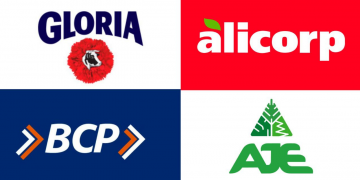Crédito: fuente
Spain became the first country in western Europe to reach half a million confirmed coronavirus infections on Monday, and recorded its highest daily case count since May on Friday.
In order to stop the spread in schools, the country’s government laid down the rules at the end of August: All students aged six and above must wear masks in class; class sizes are to be reduced; students are to be kept in assigned «bubbles» to prevent them mixing; desks must be positioned at least 1.5 meters apart; all schools must improve open-air ventilation, and provide hand disinfection stations.
The new Covid-19 regulations, however, risk widening the gap between rich and poor, by exacerbating the disparity between private and public schools — especially in the hardest-hit neighborhoods of Madrid.
In the Spanish capital, the British Council School — a private fee-paying institution — was already constructing a new open-air extension to its cafeteria when the new Covid-19 guidelines were announced.
It is now installing six pre-fabricated mobile classrooms and its playground has been transformed into a rainbow-colored labyrinth of plastic dividers, to keep students in their safety bubbles.
«It forces you to think creatively, to look at spaces in a different way, and to look at what are the fundamentals of learning,» explains Head of School Mercedes Hernandez.
Hernandez admits her school is in a privileged position. «Technology, a large campus and the beautiful Spanish weather gives us the option to learn in many different spaces in many different ways,» she tells CNN.
On a tour of its suburban campus, Hernandez introduces the school’s head nurse, Inmaculada Herranz, who is busy training two smiling nurses who have joined her team ahead of the new school year.
They are just some of the new staff the school has hired to help shoulder the burden caused by the Covid-19 protocols: Extra classes, testing and health checks.
The nursing station is piled high with hand-sanitizer, masks, face-screens and thermometers. Herranz squirts a pink liquid into our hands, the gold standard in disinfectant gels she assures us.
Hernandez says the school is making the most of its good fortune. It was able to act quickly — before the government guidelines were issued — because it drew on the experience of other British Council schools, particularly in China.
«In January and February, the school started to form an incident management team, looking at potential scenarios — what would happen, and what would we do?» Hernandez says. «Little did we know a few weeks later it would come to Italy, and then to us.»
School exposes inequalities
The difference between Madrid’s private and public schools is stark, especially in working class areas to the south, where the virus has grown fastest in recent weeks.
In the neighborhood of Leganés, Aben Hamza public school has a sports field of cracked concrete, and steel shutters over the windows.
Maria Carmen Morillas of the National Parents’ Association says classes here can easily exceed 30 students — far above the government guidelines.
But there are no builders here constructing extensions to already well-ventilated classrooms, and no orientation programs for new staff. That’s because budgets are still being processed.
«The delays have bred mistrust, obviously,» she says. «What is absolutely necessary is financial investment: Teachers need to be hired now, from day one, not after weeks and weeks of waiting.»
Madrid’s municipal government finally earmarked €370 million ($437m) for Covid-19 measures in schools in late August, promising to hire 11,000 new teachers. But the news came too late for many schools in the city, which have had to delay the start of the school year.
Teachers are frustrated too.
«There’s been no forward planning,» says Laura Macgregor, an English teacher at a private school in Madrid, whose own children attend a public school in the city center.
«We knew the virus would still be with us in September — the plans should have been in place since July so that school administrators had time to prepare,» she says.
«Now, they are working around the clock without any time to think or to plan. It’s going to be really chaotic, the first few weeks of term.»
Worse still, if classes can’t be run safely, parents’ association representative Morillas worries that public school students may be forced to return to online learning. She fears that would leave them lagging behind their peers in private schools which may be able to stay open.
Morillas has four children of her own — and just one computer, which they all had to share for classes at the peak of the pandemic.
«A screen is not a school,» she says bluntly.
«These last few months have created a digital gap that has made the social divide even bigger, a problem that is now much deeper and more complex to fix.»
The pandemic is highlighting inequality in other European countries as well.







